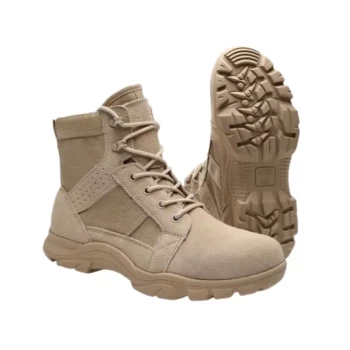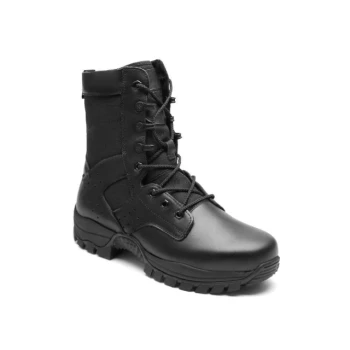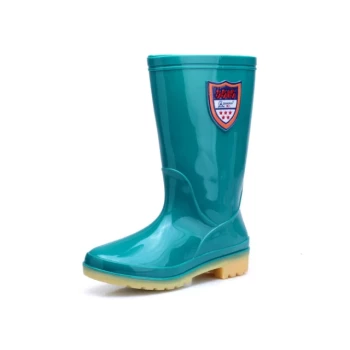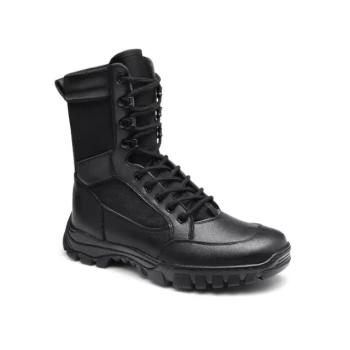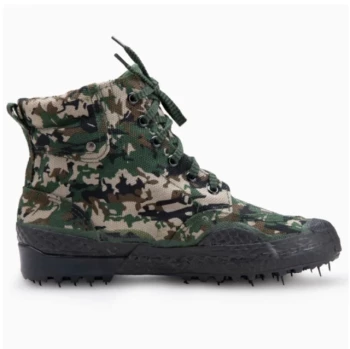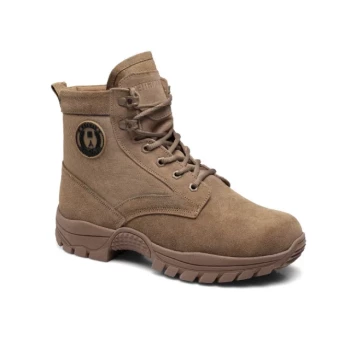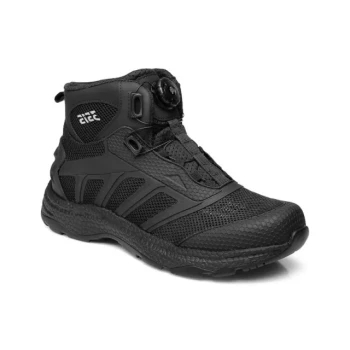The influence of World War II on the Chukka boot was pivotal, transforming it from a niche sporting shoe into a functional military asset. British officers serving in North African and Asian campaigns required footwear that could withstand intense heat and sandy terrain better than standard-issue military boots. Inspired by South African veldskoen field shoes, they adopted ankle-high, lightweight leather boots with crepe rubber soles. This wartime adaptation caught the eye of Nathan Clark, who subsequently refined the design to create the specific variant known today as the Desert Boot.
The war did not invent the Chukka boot, but it revolutionized its purpose. By stripping away heavy construction in favor of lightweight suede and crepe soles, World War II proved the design's utility, allowing it to transition from a polo player's luxury to a global casual standard.
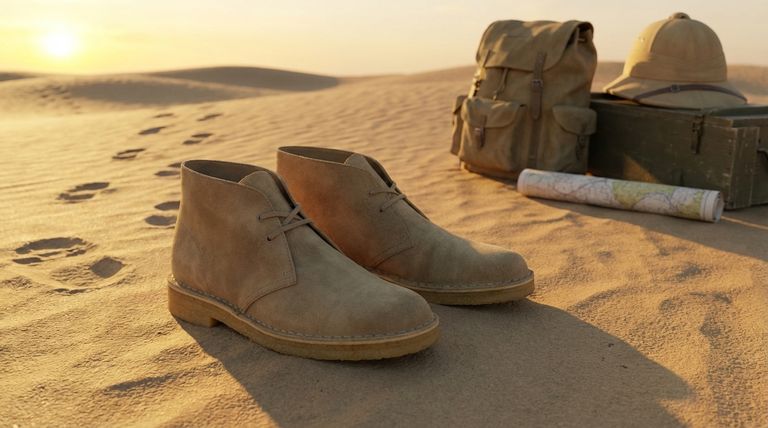
The Shift from Formal to Functional
The evolution of the Chukka boot during the war was driven strictly by necessity. The standard military boot was durable but heavy, stiff, and unsuited for hot, shifting sands.
The Influence of the Veldskoen
British officers sought an alternative based on the South African veldskoen. These were simple, unlined rawhide shoes known for their breathability and rugged simplicity.
Adoption of Crepe Soles
To adapt this concept for military use, officers commissioned local cobblers in Cairo bazaars to create boots with crepe rubber soles. This material provided excellent traction on sand and was significantly lighter than leather or hobnailed soles.
The Emergence of the "Desert" Variant
This specific wartime modification created a distinction in the footwear world. While "Chukka" refers to the general ankle-high style, the WWII version—characterized by unlined suede and crepe soles—became distinctively known as the Desert Boot.
The Role of Nathan Clark
The transition from military equipment to civilian fashion was spearheaded by one man: Nathan Clark.
Identifying the Opportunity
Serving as an officer during the war, Clark observed his peers wearing these custom-made "bazaar boots" during their off-duty hours. He noted their comfort and popularity among the troops.
Commercializing the Design
Despite initial resistance from his family's footwear company, Clark brought the design sketches back to England. In 1949, he launched the Clarks Desert Boot, directly modeled after the shoes worn by British officers in the campaigns of WWII.
Understanding the Trade-offs
While the WWII-inspired Desert Boot is iconic, the design choices made for the desert come with inherent limitations in modern contexts.
Crepe Soles in Wet Conditions
The crepe sole was designed for sand and dry heat. In modern urban environments, these soles can become slippery on wet pavement and will absorb water and grime quickly.
Lack of Structure
To prioritize breathability and weight, these boots are typically unlined. This means they offer significantly less ankle support and structural integrity compared to a traditional leather Chukka or a modern hiking boot.
Wear and Tear
The soft materials that made the boot ideal for comfort—suede and natural rubber—degrade faster than hard leather. They are prone to staining and the soles wear down relatively quickly on concrete.
Making the Right Choice for Your Goal
When selecting a Chukka boot today, you must decide if you want the historical WWII-style utility or a modern, dressier interpretation.
- If your primary focus is casual comfort and heritage: Look for a classic Desert Boot with a crepe sole and unlined suede upper, accepting that it is best suited for dry, casual settings.
- If your primary focus is durability and formality: Choose a structured Chukka with a leather or Dainite sole and lined leather uppers, which offers better longevity and weather resistance.
The legacy of World War II on footwear is a testament to how extreme conditions force innovations that eventually become timeless style staples.
Summary Table:
| Aspect | Pre-WWII Chukka | WWII-Influenced Desert Boot |
|---|---|---|
| Primary Use | Polo / Sporting | Military / Field Utility |
| Key Features | Sturdier construction | Lightweight suede, crepe rubber sole |
| Sole Material | Leather | Crepe Rubber (for sand traction) |
| Best For | Formal / Casual Wear | Dry, casual settings (heritage style) |
Need High-Quality Chukka or Desert Boots for Your Brand?
As a large-scale manufacturer, 3515 produces a comprehensive range of footwear for distributors, brand owners, and bulk clients. Our production capabilities encompass all types of shoes and boots, including heritage styles like the Chukka boot. We can help you bring a piece of timeless style to your customers with our expertise in quality materials and durable construction.
Contact our team today to discuss your production needs and get a custom quote.
Visual Guide
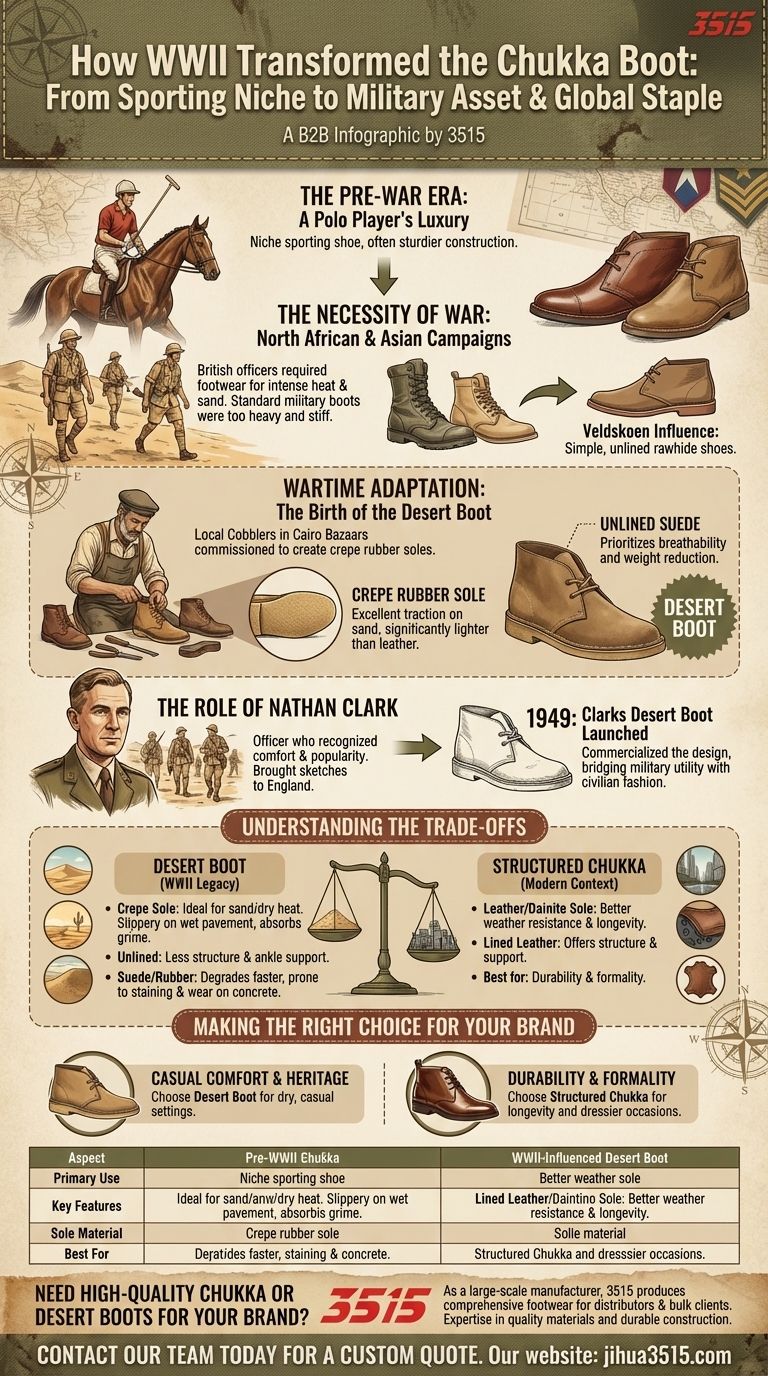
Related Products
- Wholesale Lightweight Tactical Boots Custom Manufacturer for Desert & Combat Use
- Wholesale Waterproof Tactical Boots Custom Suede & High-Traction Soles
- Durable Leather Tactical Boots Wholesale & Custom Manufacturing for Brands
- Factory Direct Wholesale Rain Boots Durable Waterproof & Fully Customizable
- Durable High-Ankle Tactical Boots Wholesale Manufacturer for Custom & Bulk Orders
People Also Ask
- How does open weave fabric perform in desert environments with fine sand? It fails, causing severe discomfort and injury.
- How do reinforced midsoles in Tactical Boots contribute to foot alignment? Expert Insights for Performance and Stability
- How do military camouflage boots protect against adverse weather? Ensuring Dry, Warm Feet in Any Condition
- How did jungle boots influence desert combat footwear? From Jungle Mud to Desert Sand
- What is the name of the new boot model mentioned in the article? Introducing the Boots Original Camo Red Desert
